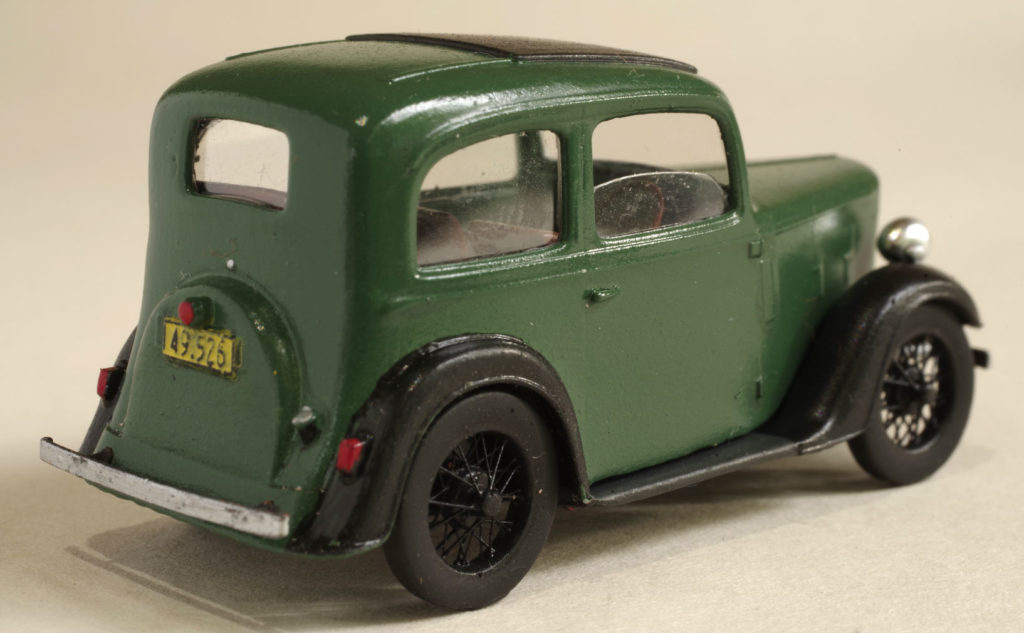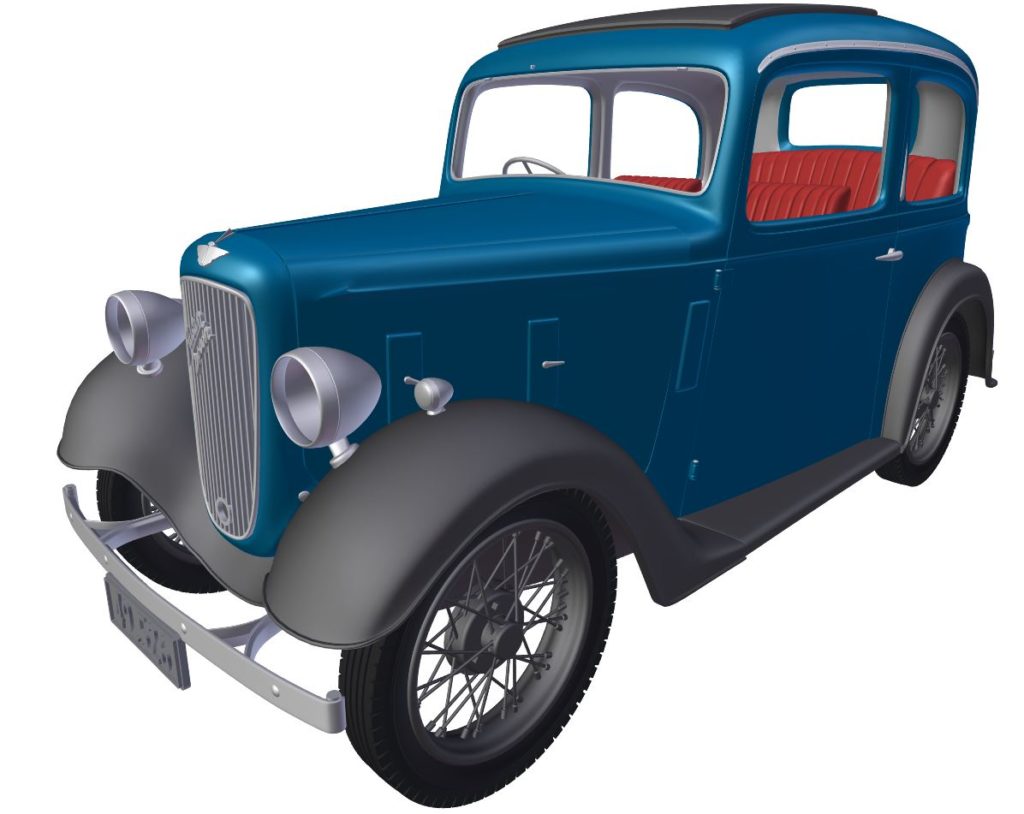I’m not sure why that title sprang to mind other than this article is written about a Ruby on Tuesday – and the Rolling Stones song of that name is, apparently, Rolling Stone magazine’s 310th greatest song of all time. Just saying. In case you wondered. Maybe a little bit?
In an earlier missive (read it here) I described building this little Austin Seven Ruby and discussed some of my motivations in doing so.

What a difference a week makes.
One of the driving factors was my admiration for a similar vehicle in 7mm by Gordon Gravett as featured in MRJ from time to time. It turns out that the patterns for that model were mastered for Branchlines by our own Paul Berntsen. Paul is a bit of an Austin afficianado and was very forthcoming with some further information I did not have. Tim B., an Austin owner from Queensland, also contacted me to politely critique the front end. All this led to a bit of additional research into the prototype. Although not originally conceived as a kit, the interest also led me to look into more efficient production to determine if it was possible to produce a kit that was realistically priced without losing all the detail features.
So to cut a proverbial long story, all this activity lead to this:

The prototype for the NZFinescale 1936-9 Austin Ruby De Luxe Saloon (model ARR) kit (still lacking finishing touches like headlight lenses, crank handle, and exhaust pipe).
What we have here is:
- A revised front end that far better reflects the prototype. A bonnet significantly shorter than on the green machine, as are the wings. The grill is tilted back and the lights repositioned.
- Better wheels/tyres. Paul Berntsen provided some wheel drawings and with some manufacturer’s tyre data we now have wheels that much better reflect the prototype. The eagle-eyed will note the valves in the rims above.
- The body/chassis here is printed at 42 micron (X/Y), whereas the original was 25 micron, both at 20 micron layers. However, a few clever tricks have allowed detail to be maintained. Cost of production is significantly less though. The new body is actually better than the old one detail-wise.
- Not evident from the image are some refinements to greatly simplify putting it together.
- A pretty neat and easy way to get the number plate crisp.
For those who may be curious, this is a screen grab of the digital model:

All the detail visible here is faithfully reproduced in the printed model.
The kit is currently in production. A pair of body shells alone take 5 hours to print, so this is not a quick exercise. Kits are available in the Emporium, but shipping is still a week or so away. Wheels and bumpers for the first batch are already done.
This is a kit for those who appreciate fine detail. While I could produce a whitemetal or resin version for less, it seems a shame to lose all the detail and character that it is possible to capture by 3D printing the kit parts. The kit price of $80 reflects the production costs.
The finished vehicle is quite robust despite the very fine section of many of the components. It is extremely easy to put together, although fitting the glazing nicely is a fiddle. Most of the fun is in painting it, but that is simplified by the separation of parts.

1 comment